

Project Name: Interpreting Pensacola and Perdido Bays Estuaries Through Archaeological Research and Museum Engagement
Awardee: Florida Public Archaeology Network (UWF)
Amount Awarded: $11,441.00
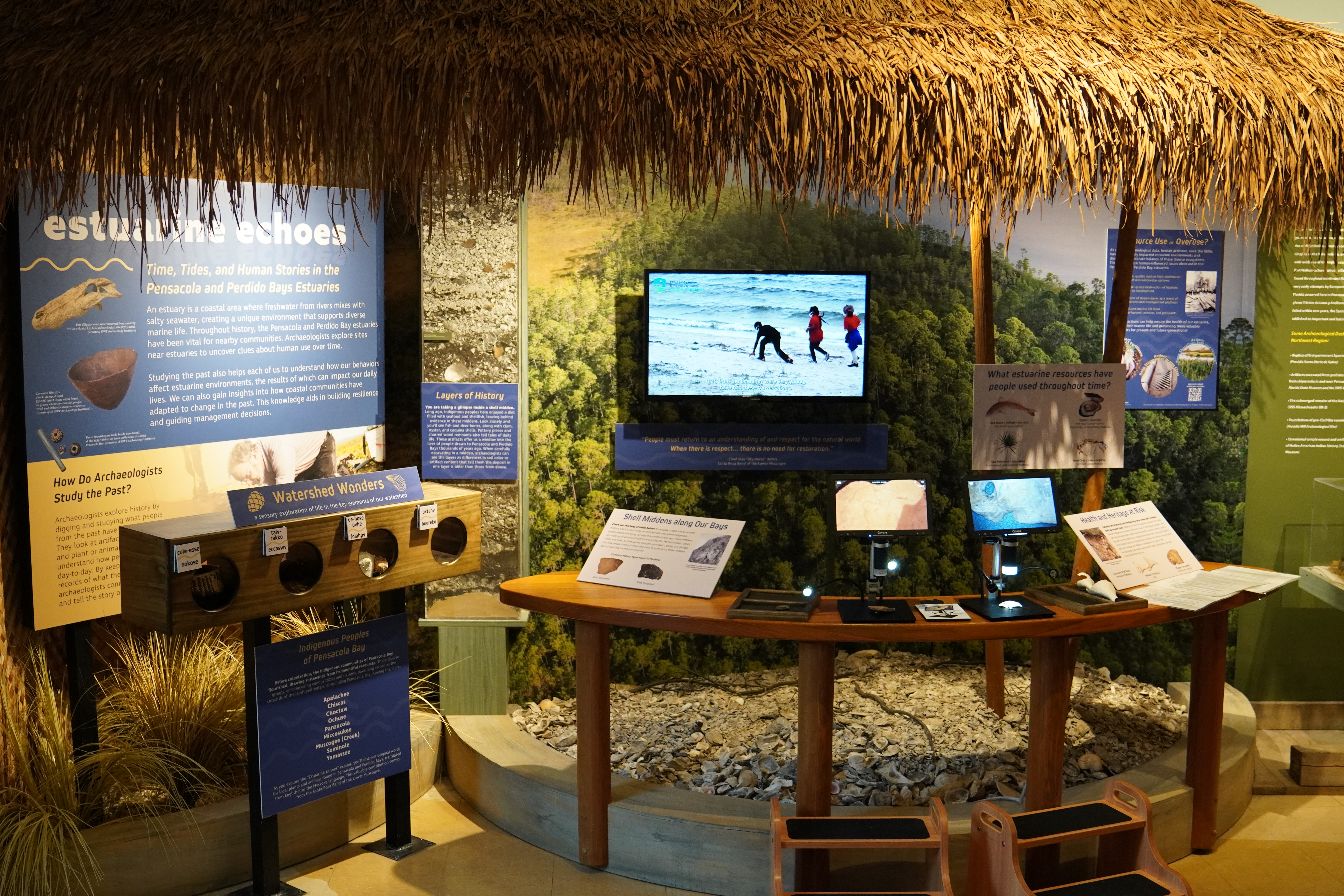
The Estuarine Echoes exhibit at the Florida Public Archaeology Network’s (FPAN) Destination Archaeology Resource Center educates visitors about the relationship between humans and estuaries in the Pensacola, Florida, area from the pre-contact period to the present. To better understand both ecosystem services and cultural impacts on estuaries over such a long span of time, the exhibit highlights archaeological evidence from shell mound and midden sites, as well as later archaeological sites, within the Pensacola and Perdido Bays watershed.
Particular emphasis is paid to resource extraction, including the transitions from hunting and gathering practices to commercial exploitation to modern management approaches in resource sustainability and ecosystem resilience. In addition to creating new interpretive graphics and text and updating existing displays, as well as featuring a screen to play videos about the historic use of the estuaries (utilizing videos already created by 350 Pensacola for the Pensacola and Perdido Bays Estuary Program), the exhibit includes an accessible, hands-on component: two digital microscopes that visitors can use to examine materials from local archaeological sites. Designed by a local educator, a youth activity that draws from and refers to exhibit content also serves to engage younger audiences and enhance their learning experience.
Project Name: Protecting Water Quality and Improving Communities Through Better Land Use Patterns
Awardee: 1000 Friends of Florida
Amount Awarded: $45,742
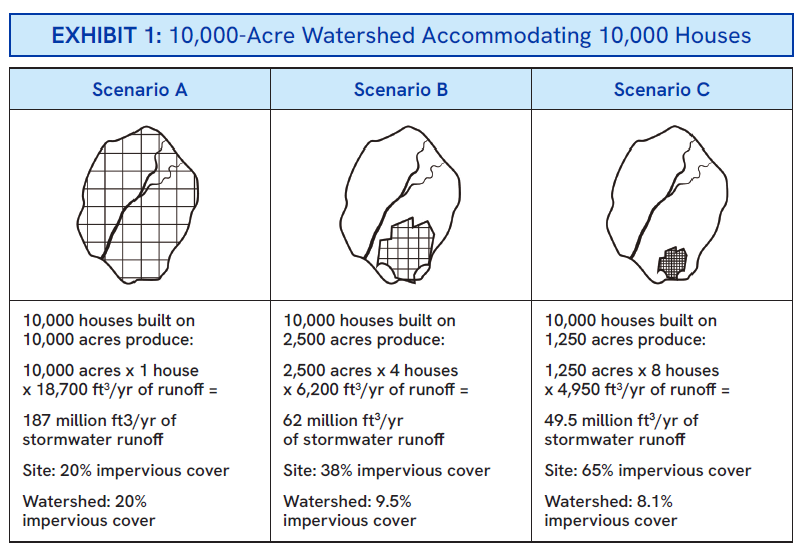
Continued population growth in the Pensacola Bay watershed challenges the ability to make improvements in water quality, as forest cover is replaced by developed land and nonpoint sources dominate the pollutant load to waterways. Mid-range population growth projections for Escambia and Santa Rosa counties (including all incorporated areas) are for 90,000 new residents from 2023 - 2040 (Bureau of Economic and Business Research, University of Florida). The 1000 Friends project created maps of the two counties displaying multiple land-use scenarios -- a baseline showing existing conditions, a trend showing future land use based on current development patterns, and at least one alternative scenario that implements more compact development patterns and land conservation.
For each of the scenarios, the stormwater volumes and water pollutant loads were modeled, demonstrating the potential for reduced pollutant loads and stormwater runoff with more compact development patterns. An accompanying report includes county-level statistics for pollutant loads and land use along with recommendations for the Land Development Code and Comprehensive Plan changes that local governments can use to facilitate better land-use patterns that preserve forest cover while creating high-quality communities for new residents.
Project Name: Connecting Kids to Our Waterways for a Sustainable Future
Awardee: Satori Foundation
Amount Awarded: $27,500
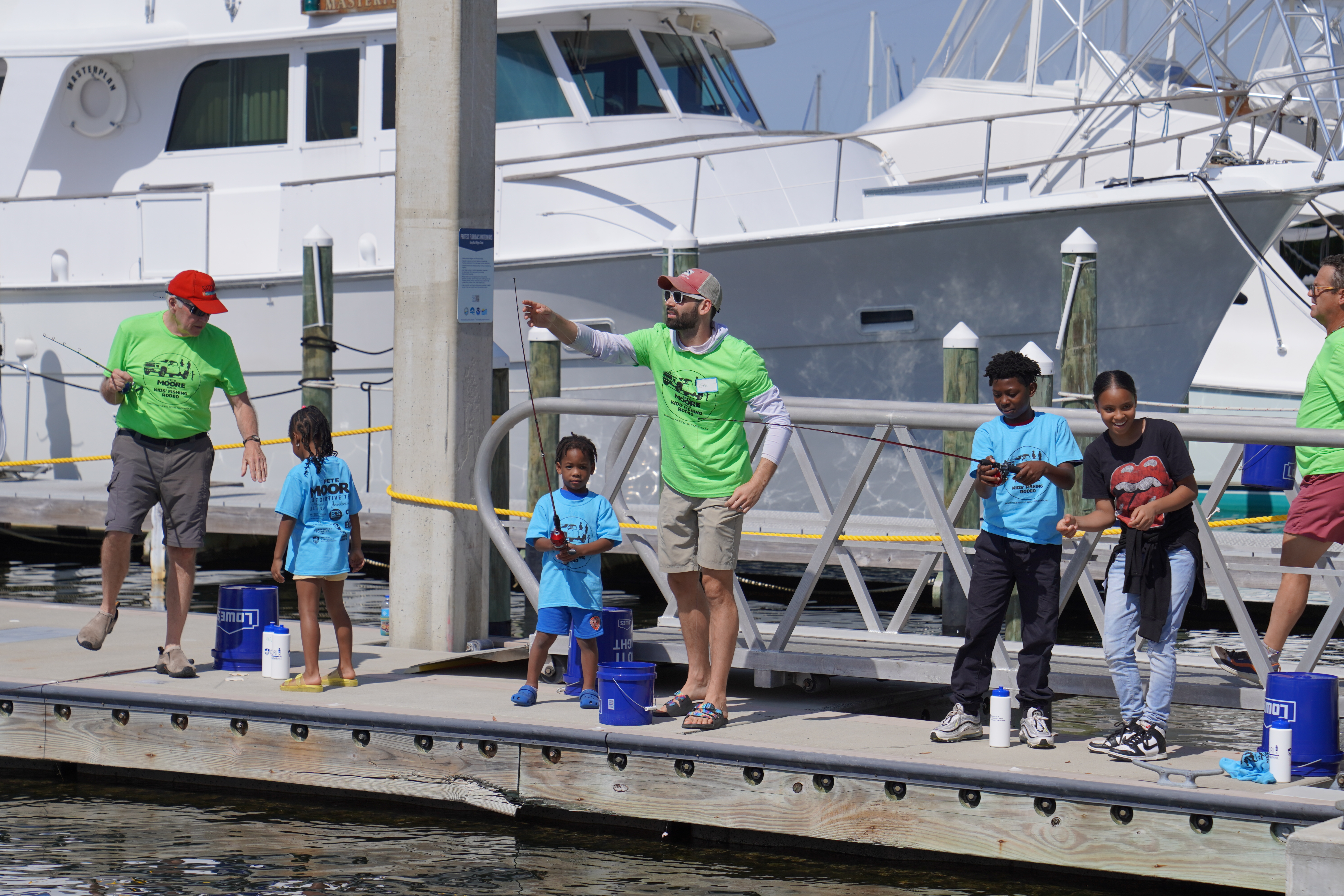
The PYC Satori Foundation's outreach includes include Marine/Environmental science trips to Deadman's Island and other destinations to learn, explore, and participate in activities for a better understanding of life below the surface and how dependent aquatic life is on healthy waterways. To enhance this experience, Satori was provided with tools and equipment for youth participants to use to enhance these lessons and support ofr volunteer training.
Funding also supported the annual Kids Pinfish Tournament that is filled with education stations from partners around the county. The tournament has a focus on outreach partners in underserved communities and provided rods and reels for youth to take home with them.
Project Name: Fisheries Habitats Across Living Shoreline Seascapes: A Public Demonstration of the Benefits of Restoration
Awardee: Dauphin Island Sea Lab
Amount Awarded: $38,950.00
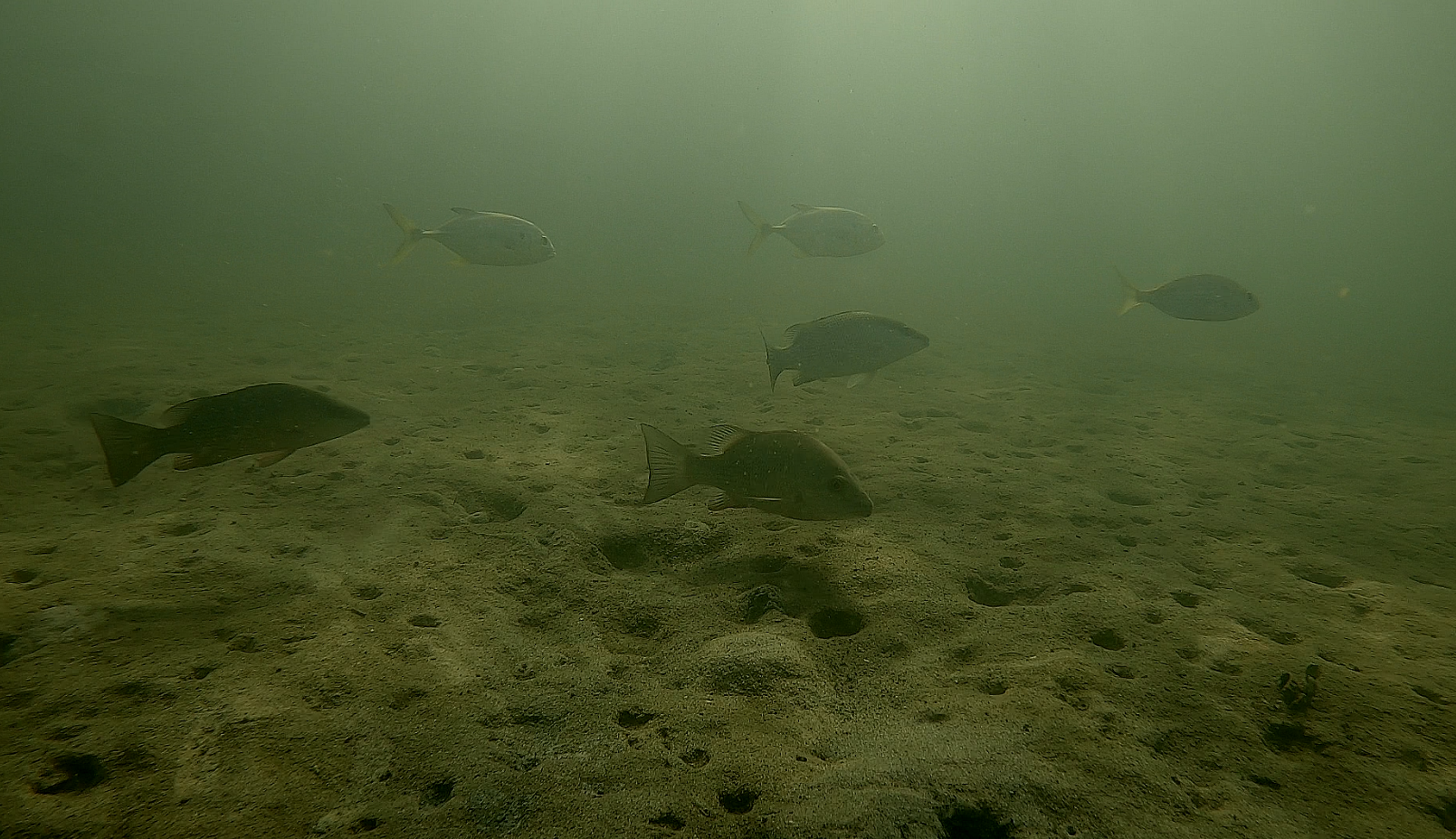
Living shorelines provide many benefits over traditional hard armoring. One of the most widely stated but least tested benefits is the enhancement of habitats for fisheries species. The Dauphin Island Sea Lab (DISL) project will use the highly visible public restorations of Project Greenshores I & II in Pensacola as demonstration sites to quantify the fish habitat benefits of these projects. Underwater video surveys will be used to sample the fish communities across the seascapes at the project sites and adjacent unrestored areas. By comparing fish densities at restored seascapes, adjacent bare substrates, and hardened shorelines, DISL can quantify how many more fish are present due to the habitat restoration, and which habitats they prefer, to better inform future living shoreline designs.
The project will develop a public facing project website to highlight the project and its findings, allowing interested people to interact with the data. Icons on maps of the sites will allow users to view videos of fish on the various habitats in the restored seascape, and drill down to view summaries of the data, such as the range of species found in each habitat, their relative abundance, and distributions. Demonstrating habitat enhancement values of highly visible public restoration projects will help guide future restoration projects, foster a greater appreciation of living shoreline approaches, and encourage their wider support and uptake in the community.
Stay tuned for the interactive website coming soon!
Project Name: Fish Community Analysis of Santa Rosa Sound Tidal Tributaries
Awardee: Northwest Florida State College (Matti Kelly Environmental Institute)
Amount Awarded: $29,000.37
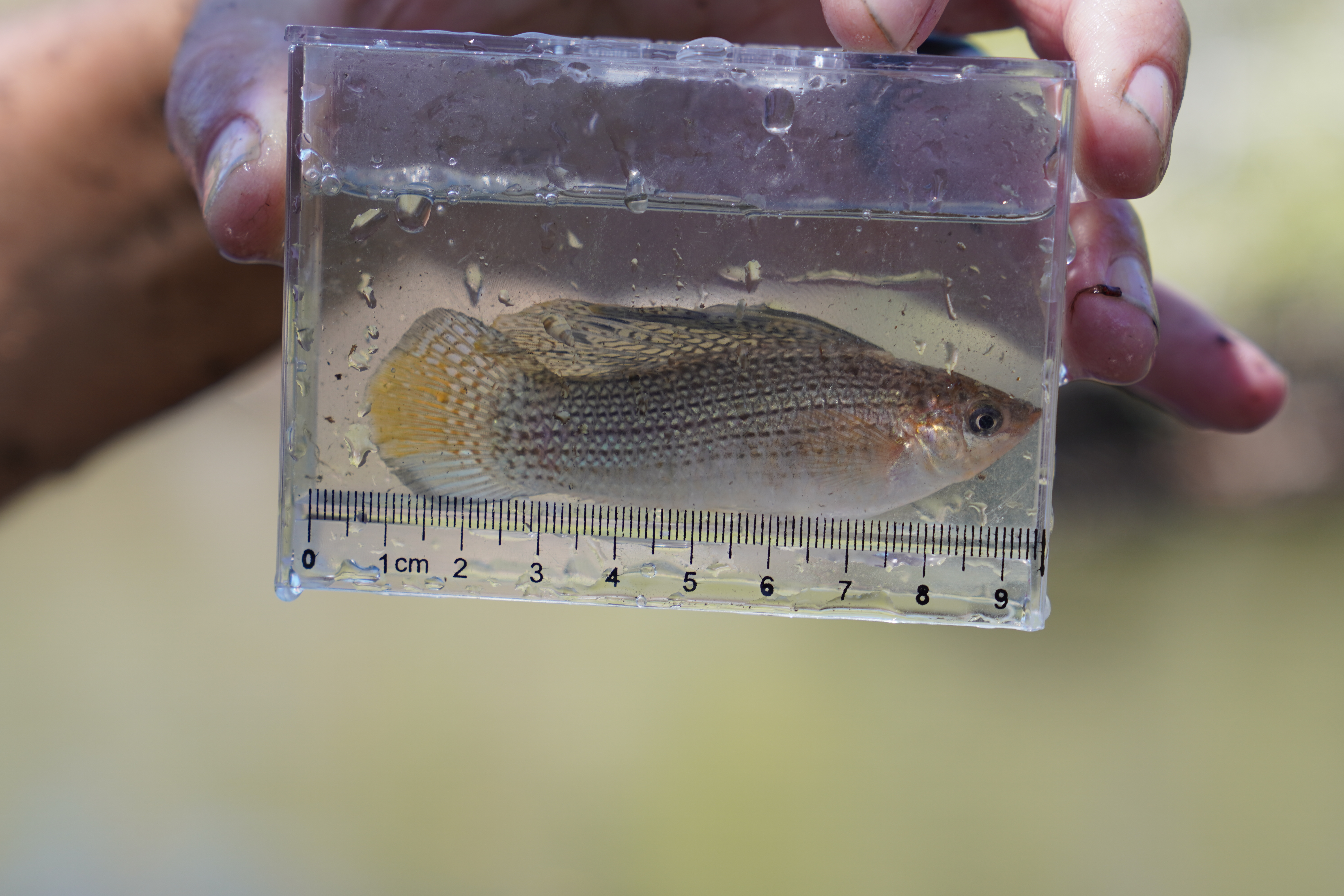
Tidal tributaries, including small tidal creeks and tidal ponds, serve as critical habitat for numerous marine fish and invertebrate species. This includes many important forage species and the juveniles of many commercially and recreationally important species such as Red Drum, Spotted Seatrout, Gulf Flounder, Blue Crab, and Pink Shrimp. There is a general lack of either short-term or long-term assessment and monitoring of juvenile fish and decapod crustacean species in the Pensacola Bay system including Santa Rosa Sound. The data that are available seemingly point to a decline in the abundance of at least some species.
The Northwest Florida State College (NWFSC) study aimed to start filling some of the gaps by sampling small tidal creeks draining into Santa Rosa Sound. These creeks should provide important habitat to both forage species and juvenile sportfish, but they have not been thoroughly sampled. Sampling occured monthly to track the community composition and abundance of fish and decapod crustaceans utilizing these creeks throughout a portion of the year that corresponds to the peak recruitment of many juvenile sportfish to their nursery habitats.
Stay tuned for the final report!
Project Name: Why Settle Here? The Effect of Water Quality, Water Column Placement, and Substrate on Epibenthic Settlement in Perdido Bay
Awardee: University of West Florida
Amount Awarded: $47,428.46
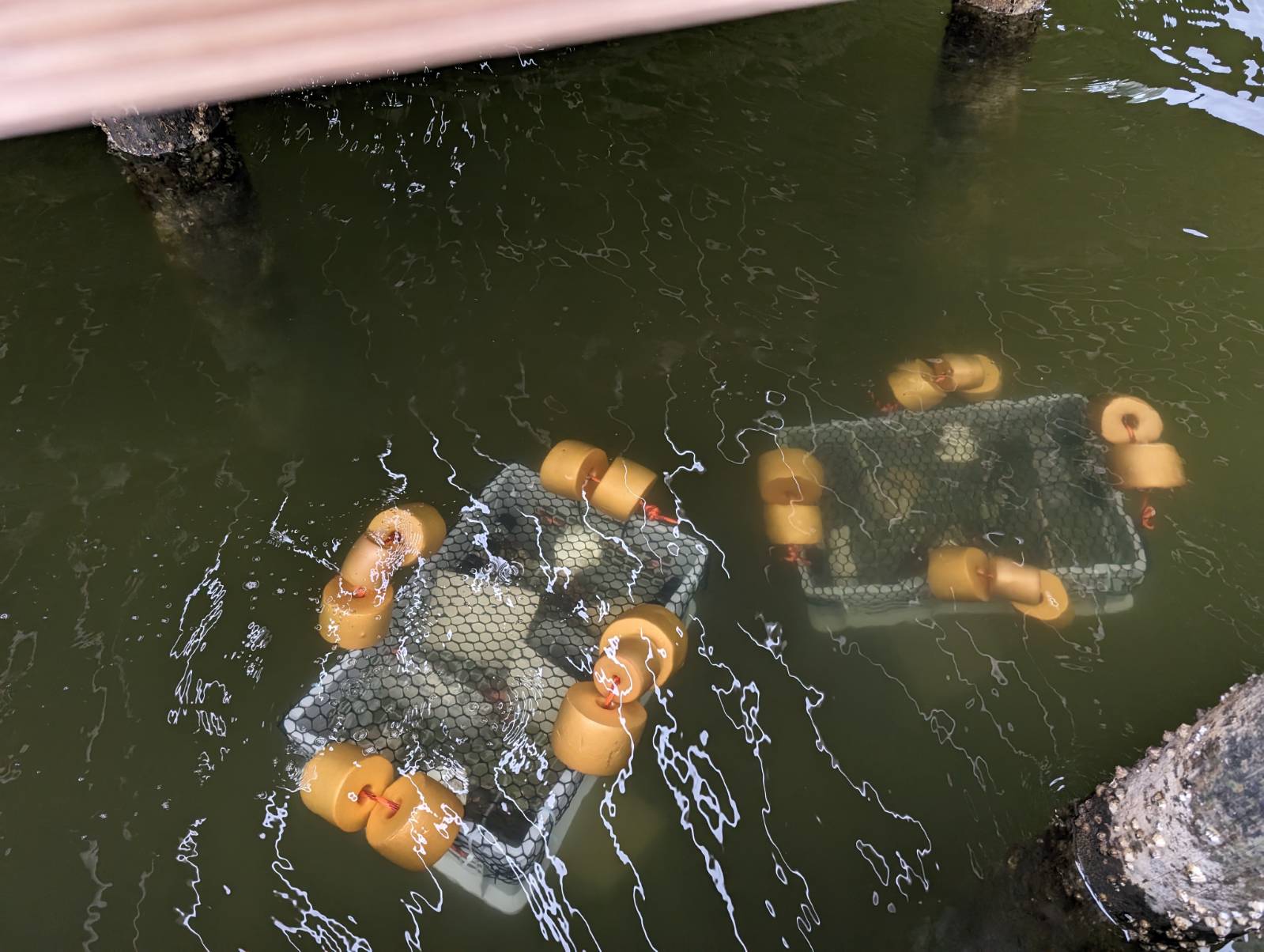
Various stakeholder groups have expressed concerns that water quality within Perdido Bay is toxic to planktonic life and that there appears to be a decline in encrusting organisms and bivalves, many of which have a planktonic larval stage that is susceptible to unfavorable water conditions. In response to this concern, UWF has been monitoring water quality and zooplankton at sites throughout the Perdido Bay system. Initial findings indicate that water quality and community composition vary by location, but within much of the bay, water quality would be satisfactory for an estuarine epibenthic community. The next step in understanding the epibenthic community of Perdido Bay is to conduct a settlement study.
This project utilized settlement studies conducted at three locations across the estuarine gradient (lower, middle, and upper Perdido Bay) and a fourth located in a bayou of Perdido Bay with reduced wave action. Settlement arrays examined the influence of water column location, substrate type, and time. Upon recovery, arrays were examined to quantify settlement and identify the taxa present. Settlement arrays were outfitted with a sedimentation tube and continuous monitoring sensors for temperature, conductivity, and dissolved oxygen. Arrays were deployed and sampled monthly. During deployment and each sampling event, zooplankton samples, water quality samples, and water clarity measurements were collected. Understanding the salinity, oxygen, sedimentation, and settlement dynamics of the system is critical for assessing the suitability of large-scale habitat restoration such as the oyster restoration efforts currently underway in the Pensacola Bay system.
Stay tuned for the final report!
Project Name: Hope on a Half Shell: Empowering the Next Generation of Oyster Stewards
Awardee: Santa Rosa County School District
Amount Awarded: $31,881.22
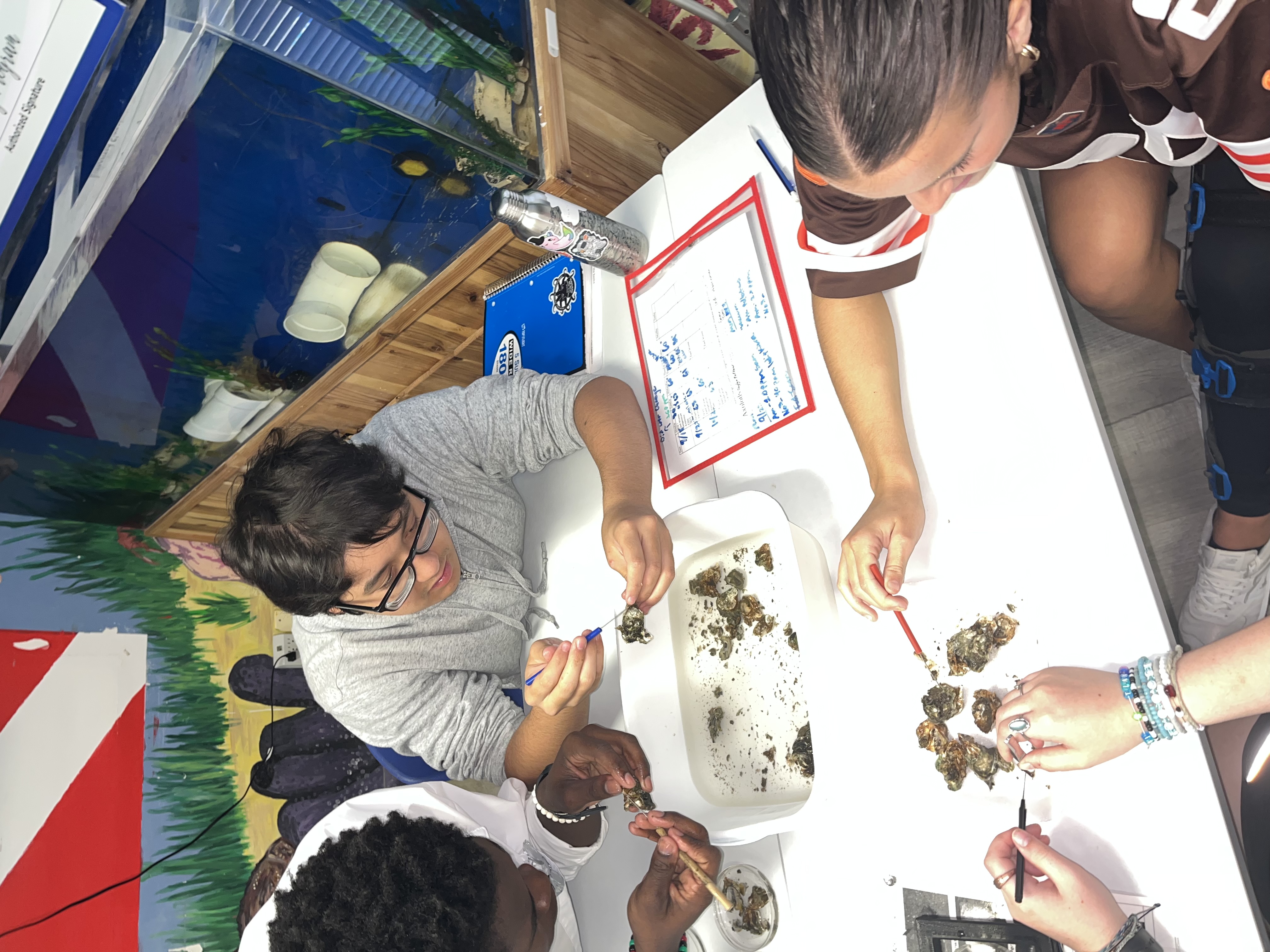
The Santa Rosa County School District’s Navarre Beach Marine Science Station (NBMSS) promotes the conservation of Gulf Coast marine ecosystems by empowering students to become ocean stewards through service, experiential learning, scientific inquiry, and innovative technologies. This project was a continuation of the grant application awarded to NBMSS in 2022-2023 and incorporate the collaboration of additional students within the Santa Rosa County School District.
Students from Navarre, Gulf Breeze, and Pace High Schools collaborated on a county-wide study of water quality and the success of oyster recruitment at four locations in our local watershed. This was an opportunity for approximately 300 students to gain proficiency with scientific methods to measure environmental variables of habitat and water quality and create a long-term dataset for this region, which will be input into the Gulf Coast Ocean Observation Systems (GCOOS) database.
These students had the the opportunity to work with investigators and water quality experts to develop, implement, evaluate, and communicate their findings. Students participated in field data collection for 14 days during the year at multiple sampling sites in local waterways (i.e., Santa Rosa Sound and Blackwater River) and conduct basic laboratory analyses. The requested funds supported the purchase equipment and reagents for three school campuses.
Project Name: Stingray and Horseshoe Crab Exhibit
Awardee: Navarre Beach Sea Turtle Conservation Center
Amount Awarded: $11,000
The Navarre Beach Sea Turtle Conservation Center (NBSTCC) is a working conservation center with the mission “Giving sea turtles more tomorrows through conservation, education, and research." The Center educates visitors about sea turtles, marine and coastal habitats, and the animals that coexist with sea turtles to keep our oceans healthy.
The Stingrays and Horseshoe Crabs viewing habitat will allow the impact on the lives of school children, local and global guests, and the community at large, ensuring guests connect with other local marine neighbors who live in Northwest Florida. By captivating guests through the Stingray and Horseshoe Crab exhibit, the ability to promote greater awareness of the obstacles these animals must overcome to survive, and how interconnected they are to other animals, our oceans, and coastal habitats becomes available to the public.
Stay tuned for exhibit opening dates!
Project Name: Understanding and Improving Water Quality in Backwater Areas of Perdido-Pensacola System Under Changing Climate
Awardee: University of South Alabama
Amount Awarded: $31,020.00
Backwater areas of Perdido and Pensacola Bays are small-scale but ecologically significant regions encompass dead-end bayous, isolated embayments, and other areas with restricted circulation. The project examined the drivers of poor flushing in the present and future due to impacts of climate change, e.g., sea level rise, warming, and changing freshwater inflows.
The tool used to develop and examine these scenarios was a three-dimensional high-resolution hydrodynamic model that covers the entire Perdido-Pensacola system. This model resolved local features such as bayous and tidal creeks, as well as extend out to the continental shelf to encompass coastal ocean influences on the bays. Water residence times and exposure times were estimated under current and future climate and sea level conditions and provide needed insights into the factors controlling flushing in these systems. By identifying drivers of poor flushing and poor water quality, effective engineering approaches or restoration may then be identified.This project's outcomes hold significant promise for improving water quality in backwater areas, enhancing coastal ecosystems, and informing management practices in Perdido and Pensacola Bays.
Stay tuned for the final report!